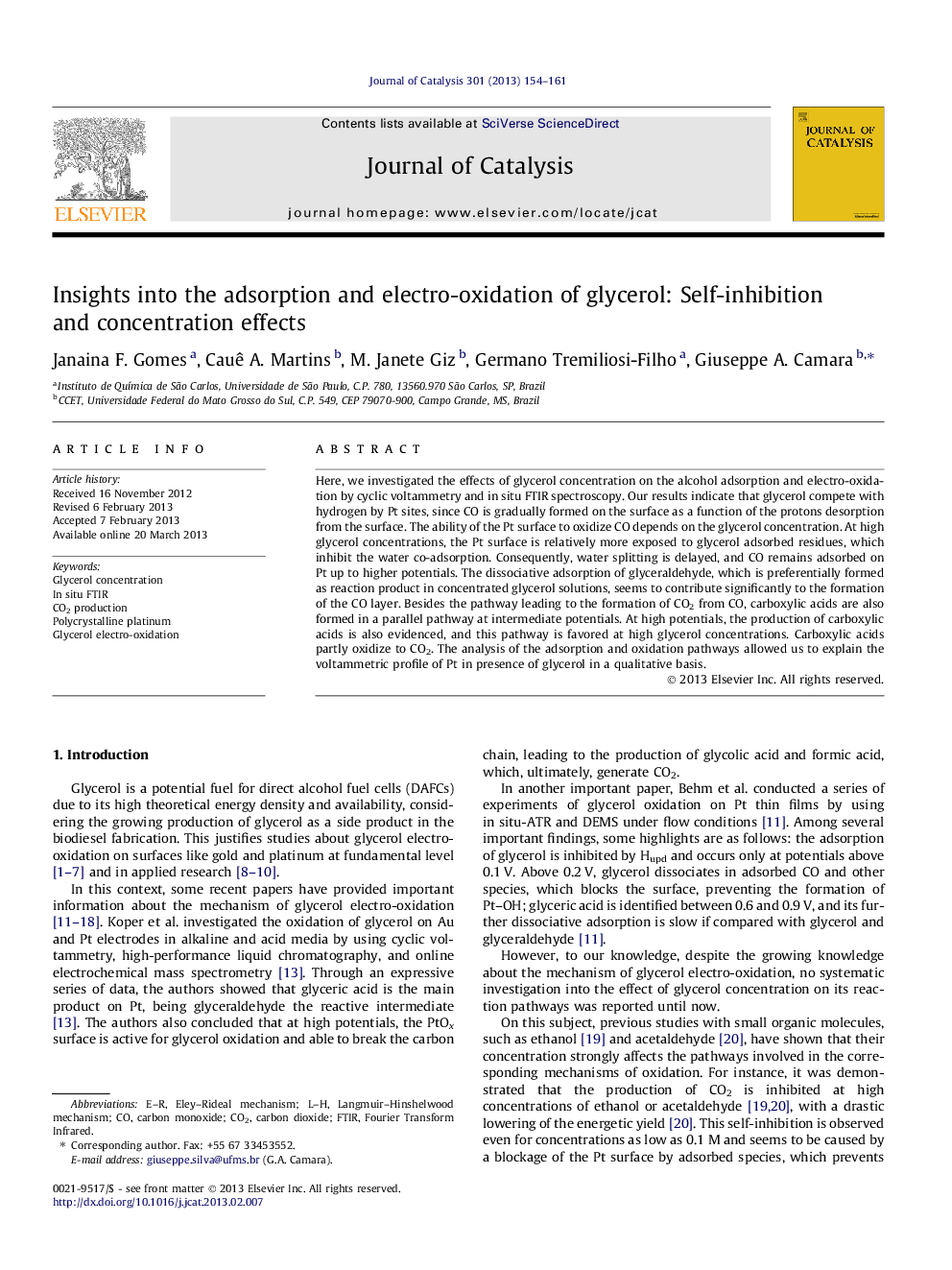| کد مقاله | کد نشریه | سال انتشار | مقاله انگلیسی | نسخه تمام متن |
|---|---|---|---|---|
| 61289 | 47574 | 2013 | 8 صفحه PDF | دانلود رایگان |

Here, we investigated the effects of glycerol concentration on the alcohol adsorption and electro-oxidation by cyclic voltammetry and in situ FTIR spectroscopy. Our results indicate that glycerol compete with hydrogen by Pt sites, since CO is gradually formed on the surface as a function of the protons desorption from the surface. The ability of the Pt surface to oxidize CO depends on the glycerol concentration. At high glycerol concentrations, the Pt surface is relatively more exposed to glycerol adsorbed residues, which inhibit the water co-adsorption. Consequently, water splitting is delayed, and CO remains adsorbed on Pt up to higher potentials. The dissociative adsorption of glyceraldehyde, which is preferentially formed as reaction product in concentrated glycerol solutions, seems to contribute significantly to the formation of the CO layer. Besides the pathway leading to the formation of CO2 from CO, carboxylic acids are also formed in a parallel pathway at intermediate potentials. At high potentials, the production of carboxylic acids is also evidenced, and this pathway is favored at high glycerol concentrations. Carboxylic acids partly oxidize to CO2. The analysis of the adsorption and oxidation pathways allowed us to explain the voltammetric profile of Pt in presence of glycerol in a qualitative basis.
The electro-oxidation of glycerol on Pt is strongly influenced by the concentration of this alcohol. At high glycerol concentrations, the formation of CO2 from CO oxidation is inhibited, while the production of carboxylic acids seems to be independent on the glycerol concentration.Figure optionsDownload high-quality image (86 K)Download as PowerPoint slideHighlights
► Glycerol concentration influences its electro-oxidation on Pt.
► This influence seems to be related with the ability of the surface to produce other adsorbates than CO.
► Parallel pathways lead to the formation of CO2 and carboxylic acids.
► Diluted solutions favor the formation of CO2.
► Carboxylic acids production is independent on glycerol concentration.
Journal: Journal of Catalysis - Volume 301, May 2013, Pages 154–161